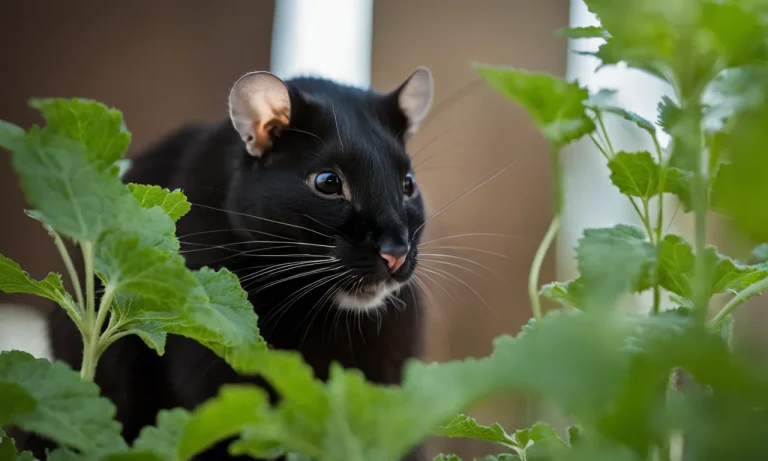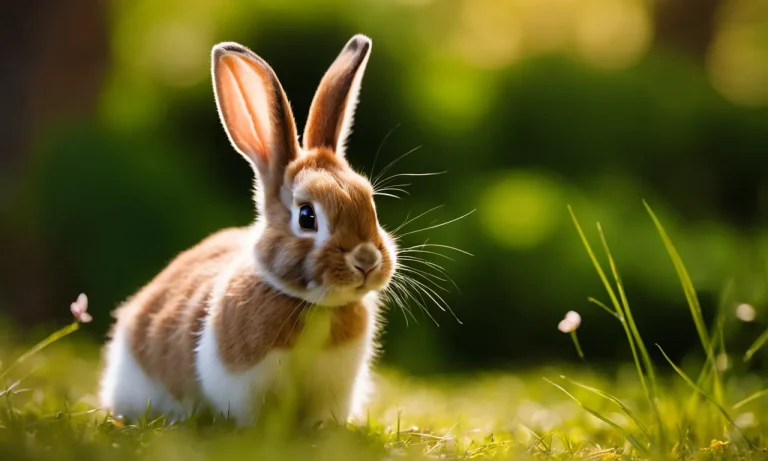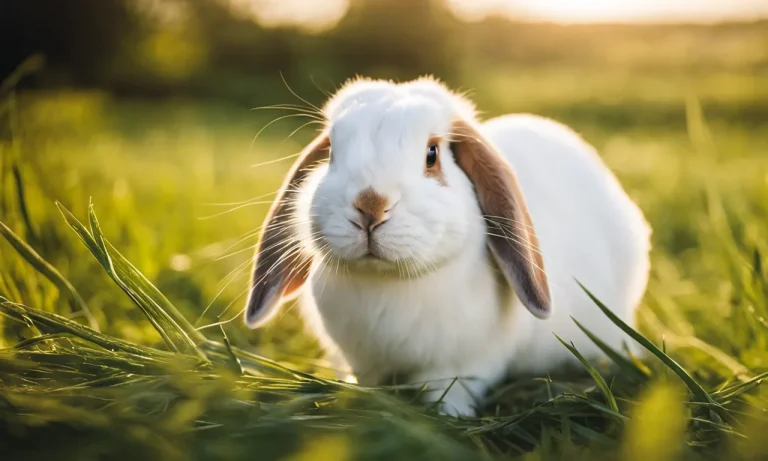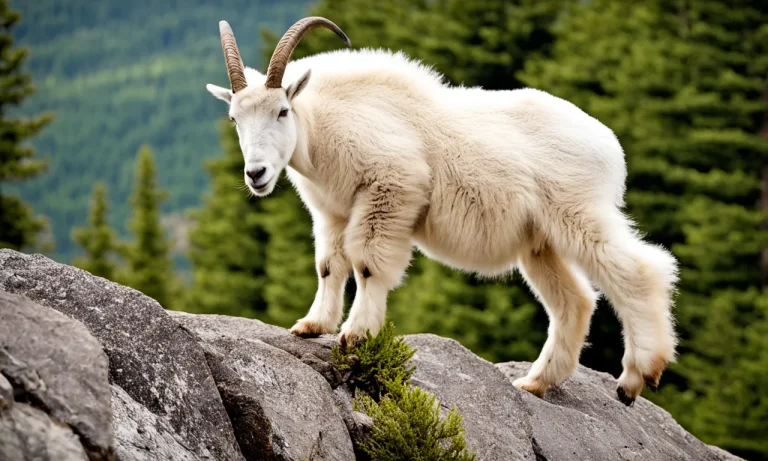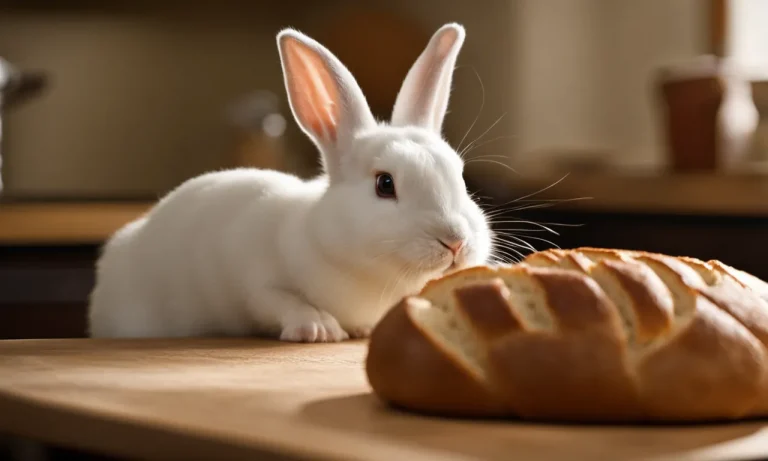Goats are known for their unique rectangular-shaped pupils and impressive vision capabilities. If you’ve ever wondered why goats have such unusual eyes, you’re not alone.
If you’re short on time, here’s a quick answer to your question: Goats have horizontal rectangular pupils that allow them to see nearly 360 degrees around themselves. This gives them excellent vision for spotting predators.
In this comprehensive article, we’ll explore why goats evolved these strange-looking eyes, how their vision compares to other animals, and how their rectangular pupils actually work.
Goats Have a Panoramic Field of Vision
One of the fascinating aspects of a goat’s eyesight is its ability to have a panoramic field of vision. Unlike humans, who have a limited field of view due to the placement of our eyes on the front of our face, goats have their eyes positioned on the sides of their head.
This unique positioning allows them to have a much wider field of view, giving them a greater ability to detect movement and potential threats.
Wider Field of View Than Humans
While humans have a field of view spanning approximately 180 degrees, goats have an incredible field of view that can reach up to 340 degrees. This means that goats can see almost all the way around them without needing to turn their heads. It’s like having eyes on the back of their heads!
Having such a wide field of view is advantageous for goats in many ways. It allows them to be more aware of their surroundings, spotting predators or sources of food from a greater distance. This ability to see in almost all directions gives them a better chance of survival in their natural habitats.
Enhanced Ability to Detect Motion
Not only do goats have a wider field of view than humans, but their eyes also have enhanced ability to detect motion. Their eyes are specially adapted to capture even the slightest movement in their peripheral vision.
This heightened sensitivity to motion helps goats quickly identify potential threats or prey.
Goats’ eyes are equipped with a large number of cells called motion detectors, which are highly sensitive to movement. These motion detectors send signals to the brain, allowing goats to react swiftly to any changes in their environment.
This keen sense of motion detection is particularly useful when goats are grazing in open fields where predators may be lurking.
As a result of their panoramic field of vision and enhanced ability to detect motion, goats have a visual advantage that aids their survival in the wild. It’s truly remarkable how these peculiar pupils contribute to the overall success of goats as adaptable and resourceful animals.
The Advantages of Rectangular Pupils
When it comes to eyesight, goats have some unique features that set them apart from other animals. One of the most fascinating aspects of a goat’s eyes is their rectangular pupils. This peculiar shape offers several advantages that help goats thrive in their natural environment.
Increased Peripheral Vision
One advantage of having rectangular pupils is the increased peripheral vision it provides. Unlike humans and many other animals with round pupils, goats can see a wider field of view without needing to turn their heads.
This gives them an advantage in detecting potential predators or finding food sources in their surroundings. Their rectangular pupils allow them to have a panoramic view of their environment, which can be crucial for their survival.
Control Light Intake
Rectangular pupils also allow goats to have better control over the amount of light that enters their eyes. By adjusting the width of their pupils, goats can regulate the amount of light they receive. This ability is particularly useful in environments with varying light intensities, such as mountainous regions where goats are often found.
By narrowing their pupils in bright sunlight or widening them in low-light conditions, goats can optimize their vision and adapt to different lighting situations.
Maintain Focus on Horizon
Another advantage of rectangular pupils is their ability to maintain focus on the horizon. Goats are known for their exceptional climbing abilities, often scaling steep cliffs and rocky terrains. The rectangular shape of their pupils helps them keep a steady gaze on the horizon while navigating these treacherous terrains.
This allows them to maintain balance and judge distances accurately, reducing the risk of falls or accidents.
Goats’ Eyesight Compared to Other Animals
When it comes to eyesight, goats have some unique features that set them apart from other animals. Let’s take a closer look at how their vision compares to that of other creatures.
Superior to Sheep
Goats and sheep may seem similar, but when it comes to eyesight, goats have the upper hand. While both animals have rectangular pupils that provide them with a wide field of vision, goats have a greater range of peripheral vision compared to sheep.
This allows them to spot predators or potential danger from a distance, giving them an advantage in the wild.
More Panoramic Than Horses
Horses are known for their keen eyesight, but goats have an even more panoramic view. With a field of vision of around 340 degrees, goats have the ability to see almost all the way around their bodies without having to turn their heads.
This wide field of vision helps them in navigating their surroundings, especially in mountainous terrains where they need to be aware of any potential threats.
Difference Between Goats and Four-Eyed Fish
While goats are not the only animals with rectangular pupils, they do share this unique trait with the four-eyed fish. However, there are significant differences between the eyesight of goats and these aquatic creatures.
The four-eyed fish has a specialized adaptation where the top half of their eyes is adapted for seeing above the water, while the bottom half is adapted for seeing underwater. On the other hand, goats have rectangular pupils that allow them to have a wide field of vision, but they lack the ability to see both above and below water simultaneously like the four-eyed fish.
Other Adaptations for Survival
Goats are fascinating creatures that have developed a number of unique adaptations to help them survive in their natural habitats. In addition to their peculiar pupils and excellent eyesight, goats possess several other remarkable adaptations that contribute to their survival.
Slit-Shaped Pupils for Nocturnal Vision
One of the most intriguing adaptations of goats is their slit-shaped pupils. These pupils, similar to those of cats, help goats excel in nocturnal vision. The shape allows for precise control of the amount of light entering the eye, enabling goats to navigate in low-light conditions with great ease.
This adaptation is particularly beneficial for goats that inhabit mountainous regions, where they often forage and climb during the twilight hours.
Yellow Eyes to See at Night
Another fascinating adaptation of goats is their yellow eyes. Unlike humans, who have predominantly white sclera, goats have a yellowish tint to their eyes. This unique feature allows goats to see more effectively in the dark.
The yellow coloration enhances their ability to detect and differentiate between various shades of gray, making them well-equipped for nocturnal activities. This adaptation is particularly advantageous for goats that live in forests or densely vegetated areas where light conditions may be limited.
Placement of Eyes for Grazing
The placement of a goat’s eyes is yet another remarkable adaptation. Goats have eyes positioned on the sides of their head, providing them with a wide field of vision. This allows them to keep a watchful eye on their surroundings, making it easier for them to detect potential predators or approaching danger.
Additionally, the lateral placement of their eyes aids in their grazing habits. Goats are known for their ability to feed on vegetation found on steep slopes or uneven terrains. The positioning of their eyes allows them to maintain a clear view of the ground as they navigate through challenging landscapes.
These adaptations, combined with their peculiar pupils and exceptional eyesight, contribute to the remarkable survival abilities of goats. The ability to see in low-light conditions, detect movement from a distance, and maintain a wide field of vision are essential for their daily lives in diverse environments.
Rectangular Pupils are Not Completely Unique to Goats
Did you know that rectangular pupils are not just a feature exclusive to goats? It may surprise you, but there are other fascinating creatures in the animal kingdom that also possess this peculiar eye shape. One such animal is the octopus.
Octopuses Also Have Rectangular Pupils
While goats are often associated with rectangular pupils, octopuses also have this unique eye shape. The rectangular pupils of octopuses can be attributed to their evolutionary adaptation for survival in the depths of the ocean.
These pupils allow them to have a wider field of vision, enabling them to detect movement and potential threats more easily.
Octopuses are known for their highly intelligent and curious nature. Their rectangular pupils, along with their ability to change the color and pattern of their skin, make them truly fascinating creatures to study.
Difference Between Goat and Octopus Eyes
Despite both having rectangular pupils, there are significant differences between the eyes of goats and octopuses. Goats are terrestrial animals, while octopuses are aquatic. This means that their eyes have different adaptations to suit their respective environments.
Goats have horizontal rectangular pupils that provide them with a panoramic view of the surroundings. This wide field of vision helps them detect predators and potential sources of food. On the other hand, octopuses have vertical rectangular pupils, which allow them to effectively scan their surroundings in the depths of the ocean.
Furthermore, the structure of the eyes also differs between goats and octopuses. Goats have a more traditional eye structure, with a cornea, lens, and retina. Octopuses, on the other hand, have eyes that are more similar to those of humans, with a cornea, lens, and retina, but with the lens and cornea located at the front of the eye.
Understanding the similarities and differences in the eyes of goats and octopuses not only provides fascinating insights into the animal kingdom but also highlights the incredible diversity and adaptability of life on Earth.
Conclusion
In summary, goats have rectangular pupils in order to provide panoramic vision to better detect predators. Their pupils allow light to enter from multiple angles, enhancing their peripheral vision compared to humans and many other animals.
While strange-looking to us, the rectangular pupils help goats survive in the wild by giving them excellent sightlines while grazing. Although unique, goats are not the only animals with rectangular pupils, sharing this trait with octopuses as well.
Underneath their funky eyes though, goats have evolved specialized optics to allow them to thrive.


